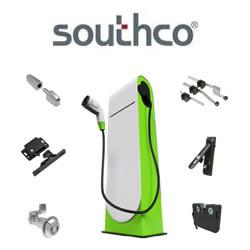U.S. Electric Grid Can Rise to Meet Paris Agreement Ambitions
President Biden's announcement of the United States' nationally determined contribution under the Paris Agreement signals a new trajectory for the energy transition. America will need to generate near-zero-emission electricity and deeply electrify transportation and industry to reduce yearly carbon emissions 50% below 2005 levels. The WATT Coalition applauds President Biden's leadership and diplomacy to increase worldwide climate ambition with this commitment. In order to achieve low-cost, rapid decarbonization, Grid-Enhancing Technologies must be integrated into the electric grid.
U.S. Electric Grid Can Rise to Meet Paris Agreement Ambitions
President Biden's announcement of the United States' nationally determined contribution under the Paris Agreement signals a new trajectory for the energy transition. America will need to generate near-zero-emission electricity and deeply electrify transportation and industry to reduce yearly carbon emissions 50% below 2005 levels. The WATT Coalition applauds President Biden's leadership and diplomacy to increase worldwide climate ambition with this commitment. In order to achieve low-cost, rapid decarbonization, Grid-Enhancing Technologies must be integrated into the electric grid.
The electric grid is a dynamic resource, with capacity far greater than is currently accessible. A recent report by the Brattle Group shows that incorporating the variability of grid capacity into operations would jump-start the massive deployment of renewable energy necessary achieve a zero-emission economy, while saving $5 billion per year nationwide. The WATT Coalition members are at work across the country and around the world to make this critical step for the grid.
How does the electric grid work today, without Grid-Enhancing Technologies? Imagine that you could never reroute around a traffic jam on a long drive. Imagine that drivers could only use three out of four lanes on the highway. This is how the electricity grid is managed today, and the inefficiency is taken for granted. With limited power flow or topology control and conservative line-ratings, customers pay billions of dollars in congestion charges while hundreds of renewable energy projects wait for sufficient transmission capacity to plug into the grid.
Grid-Enhancing Technologies unlock the full system capacity of the transmission network by increasing the utilization of existing lines, to the benefit of the environment and electric consumer rates. They do this by routing power evenly over the network, while individual lines also carry more current in favorable conditions. Today, solar and wind generation projects are waiting years for new transmission development. With dynamic line ratings, advanced power flow control and advanced topology control, twice as much renewable energy could be connected to the grid today.
In countries like the United Kingdom and Australia where utilities and other asset owners are incentivized to install Grid-Enhancing Technologies, they are widely used. Without those incentives, the United States is far behind. The Federal Energy Regulatory Commission will study shared savings incentives as a solution to this problem at a workshop on September 10. The Department of Energy could also facilitate the installation of Grid-Enhancing Technologies through grants or cost-sharing, which would be cost-effective use of grid-modernization and expansion funding.
The WATT Coalition supports these measures and others that would prepare the grid to support rapid, economy-wide decarbonization. President Biden's commitment today tells the electricity industry that it is time to build the grid of the future.
Featured Product

